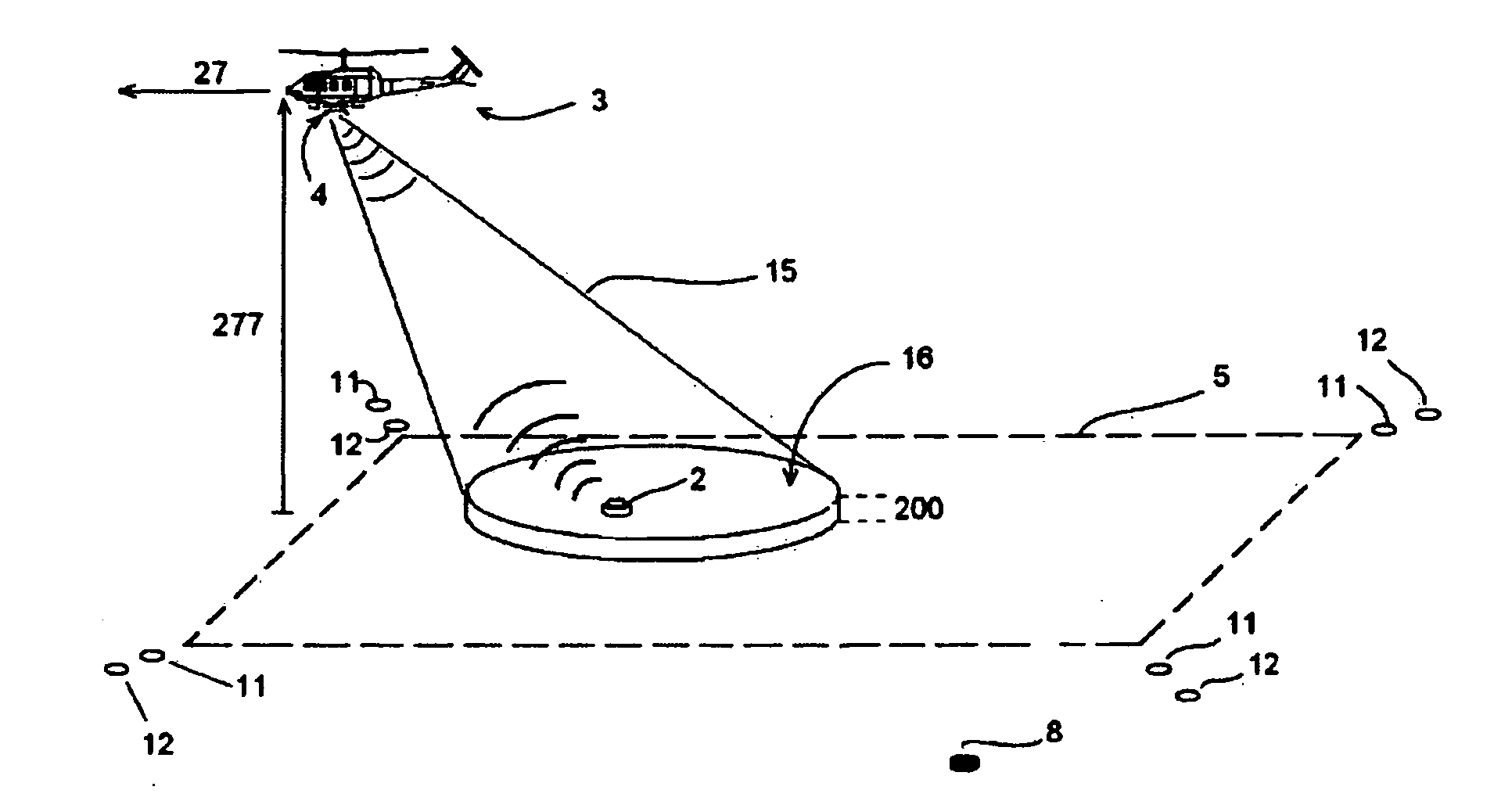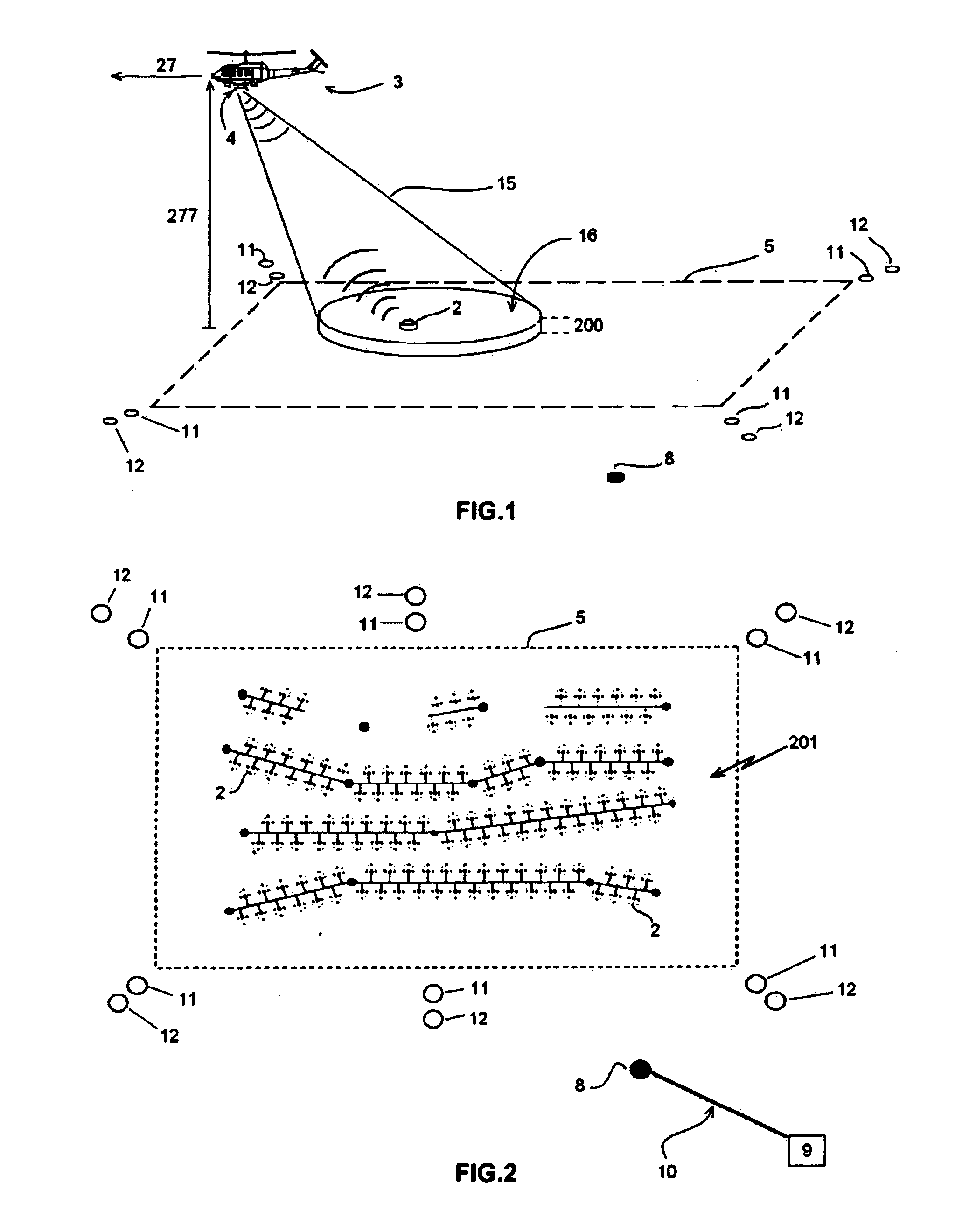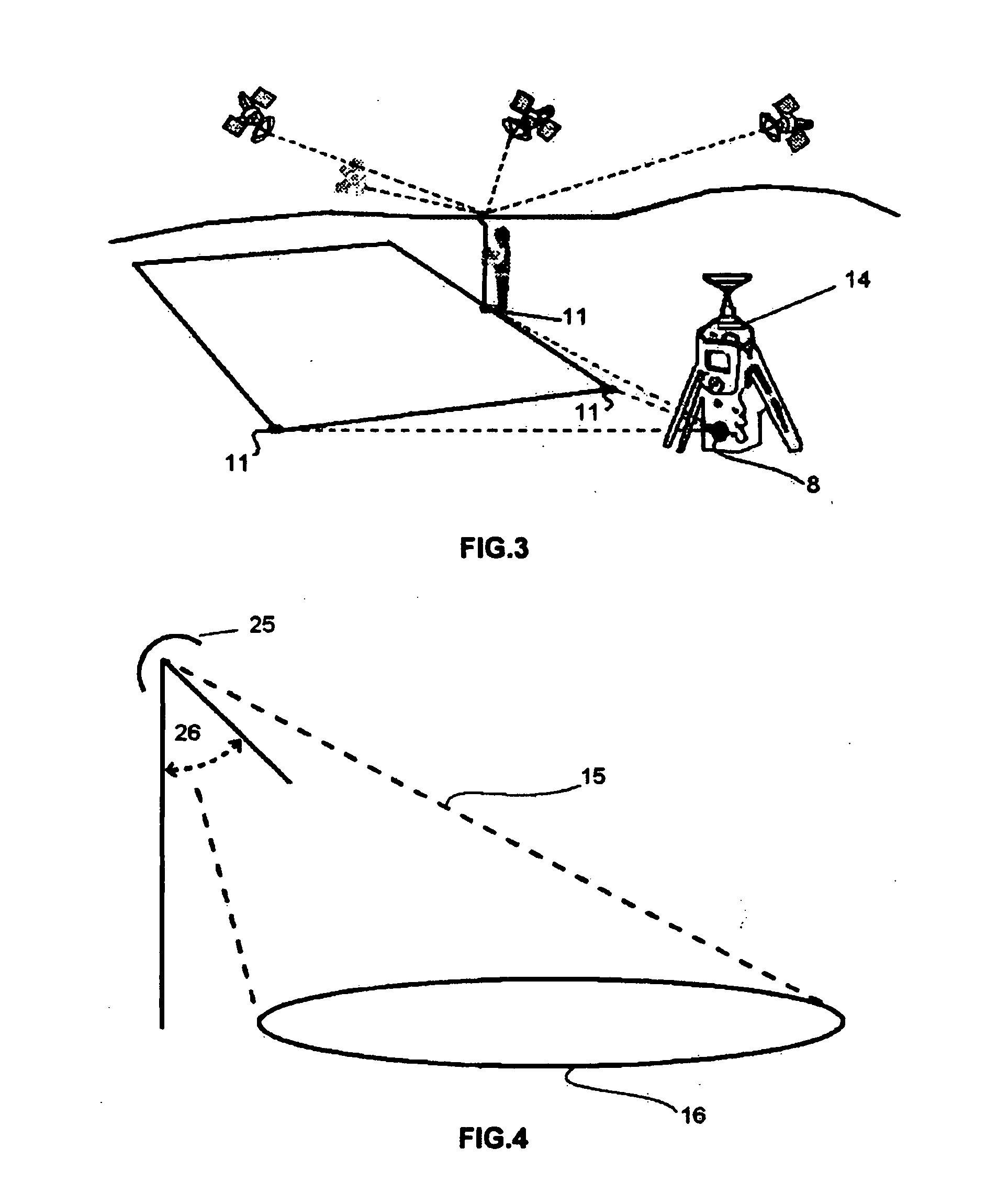System and method for detecting, locating and identifying objects located above the ground and below the ground in a pre-referenced area of interest
a technology applied in the field of system and method for locating and identifying objects located above the ground and below the ground in a pre-referenced area of interest, can solve the problems of large amount of false alarms, very dangerous and expensive detection, and slowness, and achieves the effect of reducing the number of false alarms
- Summary
- Abstract
- Description
- Claims
- Application Information
AI Technical Summary
Benefits of technology
Problems solved by technology
Method used
Image
Examples
Embodiment Construction
[0049]The system (1) for detecting, locating and identifying of antipersonnel and antitank mines (2) in its application to humanitarian demining, mainly comprises an airborne vehicle (3), preferably of the helicopter type, which incorporates a radar (4), preferably a stepped frequency radar with the respective antenna and graphical interface. In this type of radar, frequency scanned is not continuous but stepped, synthesizing a high-bandwidth pulse compression technique through the use of sequential transmissions of discrete frequencies on an established band. Its advantages are allowing high resolution as well as continuous wave transmission, both features being highly significant in short-range and high-precision applications, in addition since its architecture is of the heterodyne type, it is possible to set very narrow bandwidths as well as frequency generation is easily achieved through the use of frequency synthesizers, which ensure the required frequency step accuracy. Finall...
PUM
 Login to View More
Login to View More Abstract
Description
Claims
Application Information
 Login to View More
Login to View More - R&D
- Intellectual Property
- Life Sciences
- Materials
- Tech Scout
- Unparalleled Data Quality
- Higher Quality Content
- 60% Fewer Hallucinations
Browse by: Latest US Patents, China's latest patents, Technical Efficacy Thesaurus, Application Domain, Technology Topic, Popular Technical Reports.
© 2025 PatSnap. All rights reserved.Legal|Privacy policy|Modern Slavery Act Transparency Statement|Sitemap|About US| Contact US: help@patsnap.com



